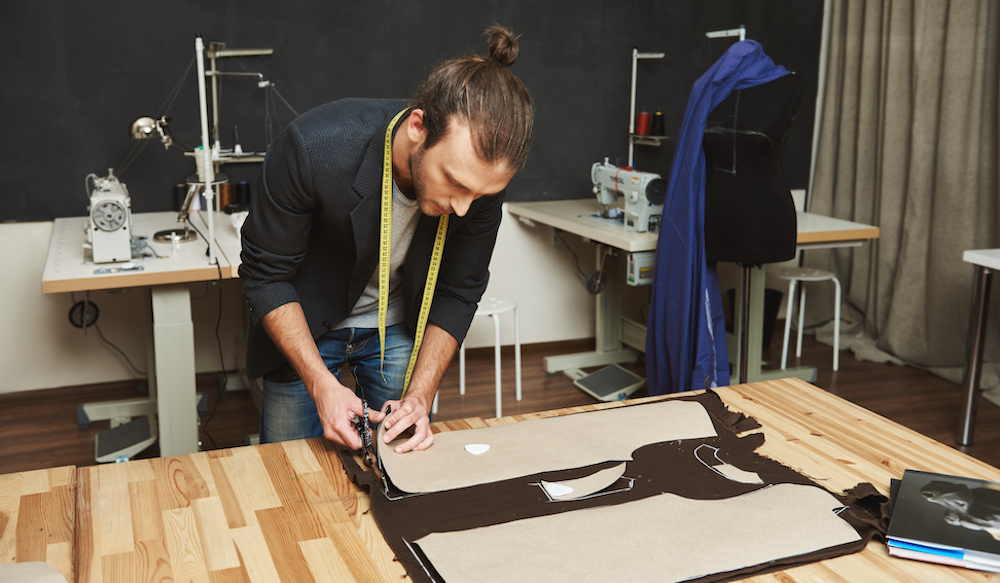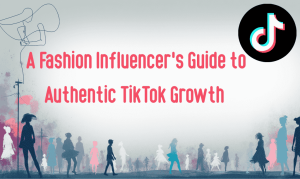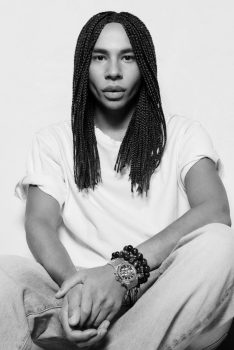As the fashion industry continues to evolve, a new frontier is emerging—one where craftsmanship meets cutting-edge technology. Fashion institutions are responding by integrating emerging technologies into their curricula. Discover the top fashion design courses that integrate AI – if you’re a fashion student, learning to use the latest tools, technologies and software in the design process is non-negotiable.

Top 10 Fashion Design Courses That Integrate AI
The global digital fashion market is projected to reach around USD 1,714 billion by 2034, growing from USD 250.6 billion in 2024 at a CAGR of 21.2 percent, per market.us. This reflects the rise of wearable tech like the Ray-Ban Meta x Coperni Limited Edition Glasses that enable voice-controlled search and play content on Spotify and Amazon Music. Or the Levi’s x Google Project Jacquard, which transforms the sleeve into a touch-sensitive remote control for smartphones! It also illustrates the increasing usage of digital twins in fashion campaigns and AI-generated brand advertisements.
Fashion institutes are reflecting this paradigm shift by integrating emerging technologies into their traditional design curricula or hosting short courses on digital fashion – from predictive analytics that shape trend forecasting to AI-driven design platforms that streamline the creative process, these programs are redefining what it means to be a fashion designer today.
This article explores forward-thinking fashion design courses that adapt to industry changes and lead the charge in fostering a new generation of designers. In today’s fashion schools, AI tools are being integrated into curricula to help students develop skills in data-driven design, trend forecasting, and digital prototyping. Moreover, AI-based design tools allow students to experiment with virtual fabrics and generate patterns.
Beyond design, fashion marketing and merchandising programmes benefit from AI-powered analytics, which enable students to understand consumer behaviour, optimise retail strategies, and simulate business models. Overall, AI fosters a dynamic, efficient, and future-ready educational environment that equips the next generation of fashion professionals with both creative and technological proficiency. Let’s take a closer look at the top fashion design courses that are integrating traditional design with cutting-edge technology.
The Future of Fashion: Web3, Metaverse, AI, AR and VR — FIT New York
The Future of Fashion: Web3, Metaverse, AI, AR and VR at FIT New York is designed for fashion and retail professionals aiming to understand the transformative potential of Web3 and the metaverse. It focuses on leveraging emerging technologies to tackle new industry challenges, boost revenues, and stay ahead in an evolving digital landscape.

Top 10 Fashion Design Courses That Integrate AI . Image Source: FIT New York
Led by experienced designer and Web3 strategist Kathlin Argiro, the course offers five structured sessions ranging from core metaverse concepts to using AI in collection design and customer loyalty. Argiro combines over two decades of fashion entrepreneurship with cutting-edge digital expertise, enriching the programme with real-world applications and strategic insight.
During the course, students engage with key technologies such as NFTs, NFC, digital twins, AI, blockchain, AR and VR to understand their role in reshaping fashion. They benefit from case studies and insights from industry experts, helping them explore practical applications of Web3 tools in brand development, customer experience, and operational innovation. On graduation, students will be equipped to apply digital assets and authentication technologies in areas like returns management and secondary market value capture.
MFA Design And Technology, Parsons School Of Design
The MFA Design and Technology two-year program provides a dynamic, challenging, and idea-driven environment in which to address the influence of creative practice on society. This program approaches technology with a critical eye, understanding the impact that computational technologies have on our lives. Areas of practice include wearable technology, game design, new media art, digital fabrication, physical computing, interaction design, data visualisation, and critical design.

MFA Design And Technology, Parsons School Of Design
Here, students cultivate their creativity in a studio-based program in which they develop ideas through prototyping while engaging in critical thinking and intensive study of the creative research process. Work involves projects with external partners; past collaborations include Ralph Lauren, US Holocaust Memorial Museum, One Plus, Human Rights Watch, and The Metropolitan Museum of Art. The program also emphasises creative collaboration with graduate students in related programs including Communication Design, Transdisciplinary Design, and Data Visualisation.
This equips students for a career in fields that include mobile and application design, interaction design, new media art, game design, motion graphics, digital filmmaking, and Web, UI and UX design. New York City’s creative industry and cultural institutions are part of Parsons education. Their Career Services Office is part of the art and design industries and helps students advance their career prospects with industry-oriented internships.All graduate programs cost $30,889.
MA Innovative Fashion Production — London School Of Fashion
The fashion industry is dominated by the pressing need to redesign production practices to be more agile, cleaner and smarter. Within the next two decades, technology will lead us to create products in ways we cannot visualise right now. A systematic understanding of the importance of disruptive business models and emerging technologies in the production process is the need of the hour and the MA Innovative Fashion Production offers an opportunity for graduates to play a key part in society’s move to more sustainable practice led by technology.
This course embraces innovative ways of thinking about the entire product lifecycle and how fundamental production is to the positive innovation shaping the fashion industry. MA Innovative Fashion Production is offered in full-time mode and runs over fifteen months, with a break over the summer. “If brands put money behind things like dissolvable thread technology, young aspiring athletes could access proper training kits more easily. They need to consider manufacturing as a really thrilling field – some of the most exciting work and innovation is happening in product development, not necessarily design,” says Ella Sharp-Mitchell, Course Leader, MA Innovative Fashion Production.

Fashion and Creative AI innovation — Institute Marangoni (Italy)
This immersive three-week course is designed to equip students with foundational knowledge and hands-on experience in leveraging AI for image styling and fashion design. By exploring cutting-edge AI tools and real-world applications, learners will discover how technology can enhance creativity, redefine aesthetics, and revolutionize fashion design and styling narratives.
Beyond creative applications, the course will address the ethical considerations surrounding AI in fashion, art and design, examining topics such as digital ownership, bias in AI-generated designs, and the impact of automation on the industry. This holistic approach fosters a forward-thinking mindset, preparing participants to innovate responsibly while embracing the possibilities of AI in the fashion industry. In addition, this course will give students the tools to experiment, innovate, and reimagine fashion with AI.
The course will run from 16 Jun 2025 till 04 Jul 2025. It will provide students with career opportunities as an AI-Driven fashion designer; help fashion brands implement AI-driven solutions for design, trend forecasting, and digital prototyping; curate AI-generated looks, design digital clothing and create fashion content for gaming, AR, and the metaverse. They will also have the knowledge to leverage AI tools to enhance sketches, create concept imagery, and develop AI-assisted Promptography; and AI-assisted processes to help brands improve supply chain efficiency and make ethical fashion decisions.

AI-Driven Fashion Campaign – École de la Chambre Syndicale de la Couture Parisienne, France
In an era of technological advancements, students of this five-day course will discover how AI can be a wonderful tool for creativity in luxury fashion. In this workshop, they will explore how to use artificial intelligence to craft detailed and imaginative campaign concepts for fashion brands, with a focus on visual consistency and storytelling.
Objectives include creating a series of image campaigns for a luxury fashion brand, for use on social media.; develop a mockup of print posters illustrating the campaign; understand the visual codes of luxury; introduction to digital tools; creating a cohesive series of visuals with strong storytelling; how to integrate these visuals into both digital and print communication; present and justify a creative project.
Tutor Victoire Bornhauser is a French-Swiss art director and graphic designer focused on luxury branding and visual storytelling. A graduate of ECAL and the Institut Français de la Mode, she designs impactful identities and immersive communication strategies for fashion brands, across both print and digital media. At the end of the program, a certificate of participation in the Summer School is issued to participants who have attended all courses.

Design for the Fashion System — Politecnico di Milano (Italy)
Design for the Fashion System at Politecnico di Milano is tailored for students with a background in design and a strong portfolio, aiming to merge traditional fashion craftsmanship with modern technologies. It pulls together core areas of interest such as AI, data science, and fashion design, preparing students for the evolving demands of the global fashion industry. Candidates should hold a Bachelor’s degree in Design or an equivalent qualification, and the course welcomes students ready to explore the intersections of creativity and innovation.
The curriculum offers a combination of theoretical learning and practical application. Students attend workshops organised in partnership with fashion companies, engaging in research on new materials, garment construction, and tailored studies in apparel, jewellery, accessories, knitwear, sportswear, and retail systems. This immersive learning experience allows students to understand how digital tools, AI, and material technologies can enhance traditional design processes and improve product development.
The programme’s integration of AI and emerging technologies is strengthened through collaboration with leading brands such as Armani, Missoni, Valentino, Ermenegildo Zegna, Stone Island, Samsonite, Decathlon, and Bulgari. These partnerships facilitate real-time knowledge exchange and provide students with hands-on exposure to industry trends and challenges. By combining craft traditions with digital innovation, students of this programme graduate with a future-facing skillset, equipped to succeed in an industry shaped by technological advancement.

Fashion Design with AI Technology — London College Of Fashion
Taught through a combination of LIVE online sessions, hands-on exercises, and industry insights, this course will equip students with digital tools to streamline fashion design. Over four interactive sessions (two hours each), students explore AI-powered design ideation, sketch-to-photo technology, and 3D modelling software to bring your concepts to life before producing physical samples. Whether you’re launching your first collection, refining your visual presentation skills, or seeking to integrate cutting-edge technology into your workflow, this course will provide the essential tools to confidently communicate your design vision.
This course teaches students how to use AI tools to generate design concepts and create reference images based on a brief; utilise 3D garment modelling software to develop digital prototypes, create and customise avatars to represent target customers in a digital design space; apply digital fabrics and assess their suitability using fabric simulation tools; and finalise a digital garment, incorporating fastenings, stitching, and texture. They will also learn how to set up and execute a virtual fashion photoshoot; and develop a concept spread to showcase designs for pitching to investors or studios.

Digital Fashion — IED Madrid
This master’s degree is for fashion designers and digital creators who want to specialise in fashion; for those who want to create new ways to interpret fashion, work with people paving the way in other disciplines, and play a role in the digital revolution. The phygital transformation of the fashion industry has introduced new needs such as personalisation, efficiency and sustainability. In this Master’s Degree in Digital Fashion students will acquire the skills and techniques to meet those needs in a creative way.
They will discover how to develop the concept, consolidate the structure and create their own collection in this full-immersion program in digital fashion. Students will discover how to develop the concept, consolidate the structure and create a digital fashion collection, right from the initial concept to the end user’s expectations. Participants will study the historical, ethical and socio-cultural aspects of digital fashion, master 3D technology and design programs, conceptualise, structure and create their own collection. They will also learn to design the virtual space of the creations and the avatars wearing them.

Fashion Planning And Allocation — FIT, New York
Impact Analytics, the leader in AI-native planning, merchandising, and inventory solutions, is integrating their SaaS solution, InventorySmart, into the course “Fashion Planning And Allocation” at the Fashion Institute of Technology. The technology will provide students hands-on experience with cutting-edge tools used to optimise planning and inventory in the industry. This represents a technology-led approach to education in fashion, equipping students with the practical skills and knowledge necessary to lead with data-driven decisions in retail and beyond.
“Incorporating data-driven technology into our curriculum is essential for preparing our students to thrive in today’s fashion industry,” said Naomi Gross, professor, Fashion Business Management, FIT. “With InventorySmart, our students can gain real-world experience with AI-native tools shaping the future of retail to give them a competitive edge and help them develop a strategy-based focus as they graduate into the workforce.”
By utilising InventorySmart, FIT students will have access to advanced AI forecasting capabilities that allow them to explore demand planning, optimise stock levels, and understand the impact of over two hundred variables on inventory management. Through this exposure, students will gain insights into how data-driven planning can help fashion businesses balance supply with demand, minimize excess inventory, and ultimately maximise profitability.

BA Fashion, Digital Technology for Fashion Pathway — Ravensbourne
With advancements in digital technology set to transform the fashion industry, students of BA Fashion can now choose the Digital Technology for Fashion Pathway as part of their second year studies. This pathway has been structured to equip the next generation of designers with digital tools to bring their ideas to life.
The course will take a practice-based approach to utilise cutting-edge technologies such as CLO 3D and Marvellous Designer. Designers will be guided through sessions led by industry trailblazers in early digital fashion adoption. These sessions will explore the likes of avatar modelling, digital garment design, character rigging, world building and digital environments, augmented reality, virtual reality and 3D scanning.
With collaboration at its core, designers on this pathway will engage in multidisciplinary projects, which gives them the opportunity to try their hand at the creation of immersive VR environments, virtual garment fittings, sensory experiences, holograms and much more.
FAQs on integrating cutting-edge technologies in fashion design curriculums
Why is it essential to include technology in fashion design education today?
Technology is transforming every stage of fashion—from design to production, marketing and retail. Integrating it into curriculums ensures students are future-ready. For example, fashion brands like Burberry use digital prototyping and AI forecasting to reduce waste and improve efficiency.
How does 3D design software enhance student creativity?
3D tools like CLO 3D and Browzwear allow students to visualise and simulate garments on virtual avatars before physical production. This encourages experimentation without material costs and promotes sustainability.
What role does AI play in modern fashion education?
AI assists in trend forecasting, customer behaviour analysis, and design inspiration. Tools like Heuritech help students learn how data can influence collection planning and reduce inventory waste.
How is AR/VR technology used in fashion design training?
AR/VR provides immersive experiences like virtual runways or digital fitting rooms. Institutions like the London College of Fashion use VR to teach students how to create interactive fashion shows and retail experiences.
Are wearable technologies relevant to fashion students?
Yes. As smart textiles and wearables like Google Jacquard jackets become mainstream, students must understand sensors, conductive fabrics, and their integration into design for future applications.
How does learning digital fabrication benefit fashion students?
Digital fabrication—like 3D printing and laser cutting—allows precise, innovative production methods. Designers such as Iris van Herpen are known for using 3D printing to create avant-garde haute couture pieces.
Why should fashion design students learn coding?
Basic coding enables students to work with interactive garments or design responsive fashion apps. Schools like Parsons and MIT Media Lab have integrated programming into their wearable tech curriculums.
What is the significance of sustainability technologies in fashion education?
With growing focus on sustainable fashion, tools like Life Cycle Assessment (LCA) software help students measure a garment’s environmental impact. Brands like Stella McCartney collaborate with tech firms to track sustainability in real time.
How does digital fashion and NFTs impact design education?
The rise of digital clothing and NFT collections (The Fabricant, DressX) demands new design approaches. Students must learn to create for digital-only platforms, expanding career opportunities in virtual fashion.
What are leading institutions doing to integrate technology in fashion curriculums?
Top schools like Central Saint Martins, FIT, and IFA Paris are introducing courses in digital craftsmanship, AI in fashion, and virtual fashion entrepreneurship, ensuring students are equipped for the evolving landscape.
Jasmeen Dugal is Associate Editor at FashionABC, contributing her insights on fashion, technology, and sustainability. She brings with herself more than two decades of editorial experience, working for national newspapers and luxury magazines in India.
Jasmeen Dugal has worked with exchange4media as a senior writer contributing articles on the country’s advertising and marketing movements, and then with Condenast India as Net Editor where she helmed Vogue India’s official website in terms of design, layout and daily content. Besides this, she is also an entrepreneur running her own luxury portal, Explosivefashion, which highlights the latest in luxury fashion and hospitality.










